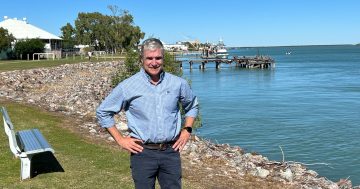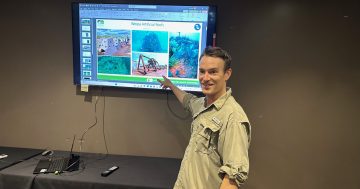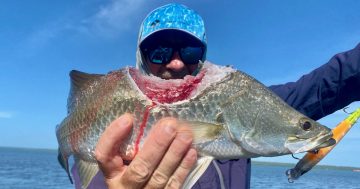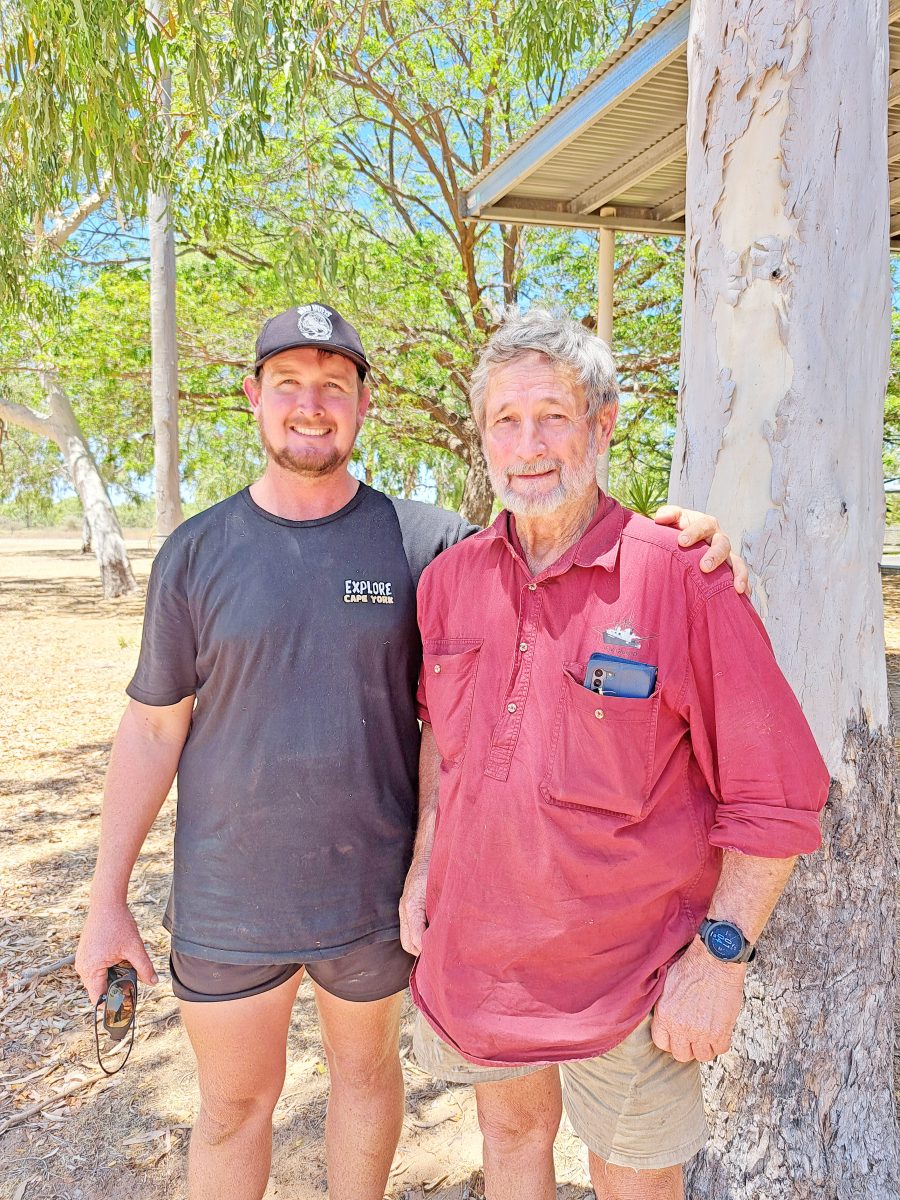
Kieran and Greg Howard made the long trip from Weipa to be at last week’s AGM in Karumba.
FATHER and son fishermen Greg and Kieran Howard spent 10 hours driving on a dusty and corrugated road to be in Karumba last week so they could have their voices heard by the government.
Kieran said it was important to him and his dad to show their faces and be united in the cause of the Gulf of Carpentaria Commercial Fishermen Association.
“I came to the AGM so the people who are making decisions on behalf of all of Australia can see who it’s affecting … so I can understand what the implications are and how far (the government) wants to go with this,” Kieran said.
“And I believe it’s important for us to have a say.”
The Howards own and operate the fishing vessel Glory D out of Weipa and have been fishing the Gulf waters since 1986.
“I’m a third-generation fisherman and I run my family’s boat,” said Kieran.
“We primarily work between the Love and the Ducie (rivers) and a little bit out of Boyd’s Bay.”
The Howards have an N3 licence, which allows them to catch barramundi with gillnets.
They also catch Spanish mackerel through line fishing.
“We operate a boat that supports my parents and me, as well as a deckhand who has been with us for the last eight years,” said Kieran.
“We fish in an area that I consider to be sustainable and the threat of closures implicates our whole livelihood.”
Kieran said he didn’t understand why UNESCO was making demands of the Australian and Queensland governments to create more net-free zones in the Gulf.
He said he thought the governments were taking the easy option, rather than fighting the Paris-based organisation.
“I believe the state is targeting us in the Gulf because they don’t want us here,” he said.
“They would rather go down the line of aquaculture to appease voters down south.”
Stories of gillnet fishers killing threatened species were overblown or simply made up, Kieran said.
“We don’t go to work to kill needlessly,” he told Cape York Weekly in Karumba.
“What a lot of people don’t understand is that net fishing is very, very selective.
“We can’t catch under-sized barramundi and, if we’re using the smaller net, I don’t really catch anything bigger than I really want.
“When used correctly, gillnets are very effective at catching a specific species, whether that be a mullet for a recreational fisher or a barramundi for a commercial fisher.
“I’ve never interacted with anything other than sawfish but I’ll go on record as saying that I’m one of the few people that have worked closely with the CSIRO to do the research.
“For as long as I can remember we’ve been interacting with the sawfish and we’ve been safely releasing them.
“I know that 100 per cent of the interactions that I’ve had with endangered or threatened species; 100 per cent of them have all been released.”
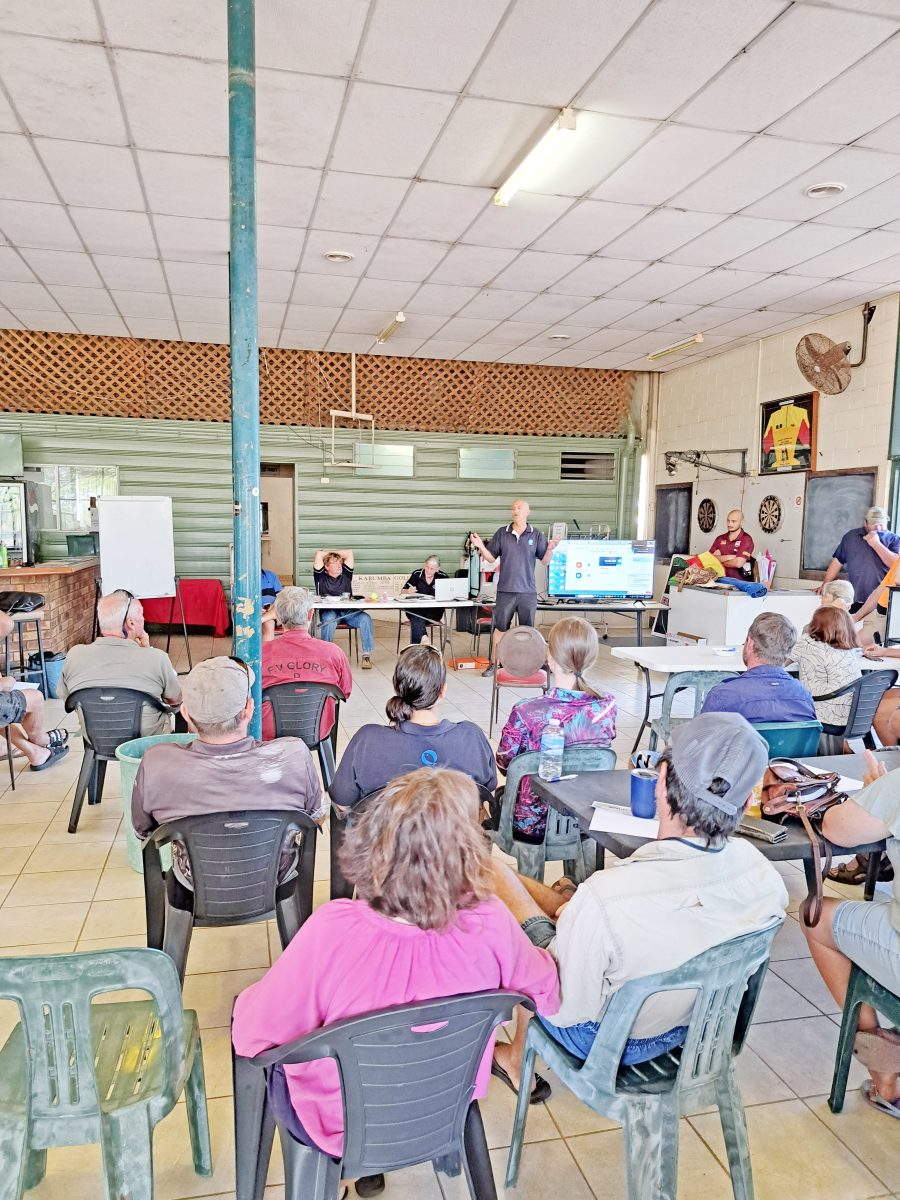
Dr Richard Pillins from the CSIRO explains to fishermen in Karumba that sawfish have a high-survivability rate if caught in gillnets and can be released safely back into the wild.
This was backed up by Richard Pillans from CSIRO, who worked closely with Kieran and others in the Archer River region to collect data on the threatened species.
“Sawfish have a great survival rate in nets and can live for up to two days after being caught up in one,” he told the crowd at last week’s AGM in Karumba.
“In my experience, fishermen are doing the right thing when they catch sawfish in their nets and release them safely.”


